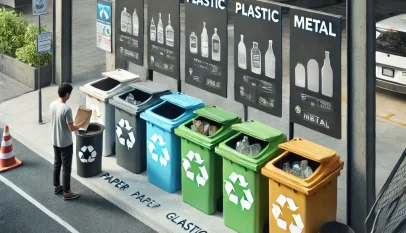
Section 321 is a critical aspect of customs clearance that offers significant benefits for eligible shipments entering the United States. This provision allows for the duty-free importation of goods valued at $800 or less, streamlining the process for both consumers and businesses. Understanding the implications of Section 321 can lead to substantial savings and efficiency for those navigating international shipping.
Navigating customs can be complex, but Section 321 simplifies the clearance process by reducing paperwork requirements for low-value shipments. This change not only speeds up delivery times but also minimizes the costs associated with customs duties. As more businesses leverage e-commerce, grasping this section becomes essential for anyone involved in importing goods.
Awareness of Section 321 can empower importers to maximize their shipping strategies while staying compliant with regulations. By utilizing this provision, businesses and individuals can enhance their operational efficiency and improve customer satisfaction while avoiding unnecessary fees.
Understanding Section 321 Customs Clearance
Section 321 allows for simplified customs clearance of low-value shipments. It is essential for businesses involved in international trade, providing an efficient way to import goods without incurring duties or excessive paperwork.
Overview of Section 321
Section 321 of the Tariff Act permits the importation of goods valued at $800 or less without payment of duties. This regulation aims to facilitate trade by streamlining customs processes for low-value shipments. Goods eligible under this section include imports for personal use, gifts, and commercial merchandise.
It is crucial for importers to ensure that their shipments meet the specified value threshold. Accurate documentation must accompany each shipment for customs to process it effectively. This section benefits small businesses and individual consumers by reducing the cost and complexity associated with importing.
Eligibility Criteria for Section 321 Entry
To qualify for Section 321 clearance, shipments must meet specific requirements. The primary criterion is that the total value of goods must not exceed $800. This value includes all costs associated with the product, such as freight and insurance.
Additionally, goods must be imported for personal or business use and should not be intended for resale. Proper documentation is essential. Importers should provide a declaration that clearly states the value and nature of the goods.
Repeated use of Section 321 for the same item may raise scrutiny from customs authorities. Importers should avoid using this section for high-frequency transactions to ensure compliance.
Benefits of Section 321 Clearance
Utilizing Section 321 offers several advantages for businesses and consumers. The most significant benefit is the exemption from customs duties for low-value shipments. This can lead to substantial savings, especially for small businesses importing frequently.
Additionally, the expedited clearance process reduces the time associated with customs procedures. Simplified paperwork allows importers to focus more on their business rather than dealing with compliance issues.
This section also promotes e-commerce by making it easier for online retailers to ship goods to customers without complicated customs barriers. Overall, Section 321 enhances accessibility for a wide range of international buyers and sellers.
Section 321 Clearance Process
This section outlines the essential components of the Section 321 customs clearance process, including required documentation, a step-by-step procedure, and common issues encountered during clearance. Understanding these elements can streamline the importation process for low-value shipments.
Required Documentation for Clearance
For Section 321 clearance, specific documentation is essential. The primary documents include:
- Commercial Invoice: This must detail the goods, quantity, value, and origin.
- Bill of Lading or Airway Bill: Indicates the mode of transport and shipment details.
- Form 3461 or 7501: Required forms submitted to U.S. Customs and Border Protection (CBP) for clearance.
Each document should accurately reflect the shipment details. Accuracy can prevent delays at customs. Incomplete or incorrect documentation could lead to additional fees or penalties.
Step-by-Step Clearance Procedure
The clearance procedure for Section 321 involves several key steps:
- Pre-Arrival Documentation: Submit the required documents electronically to CBP prior to arrival.
- Customs Review: CBP reviews documents and may request additional information.
- Inspection: The shipment may undergo random inspection based on risk assessment.
- Release: If approved, the shipment is released from CBP custody.
Timely submission of documents helps ensure a smooth process. Keeping all information organized can facilitate quicker inspections.
Common Issues and Resolutions
Several common issues may arise during the Section 321 clearance process:
- Document Inaccuracy: If documents do not match the shipment, delays can occur. It is crucial to double-check all details.
- Incorrect Value Declaration: Declaring a value above the $800 exemption can lead to additional duties. Proper valuation is essential.
- Delayed Shipments: External factors like weather or logistics can cause delays. Communication with the carrier can provide updates.
Addressing these issues quickly can minimize disruptions. Proactive management of documentation and communication with customs officials is key to overcoming challenges.
Recycling Drop Off: Your Guide to Proper Waste Disposal
Recycling dropoffcenters offer a convenient solution for those looking to dispose of recyc…









